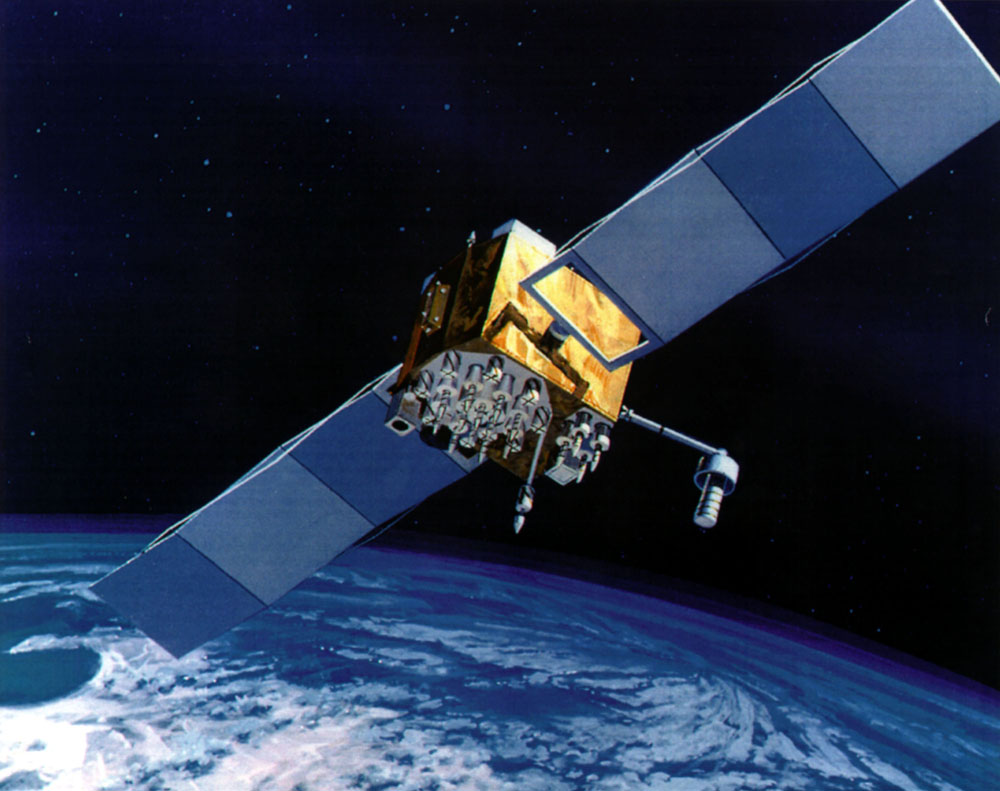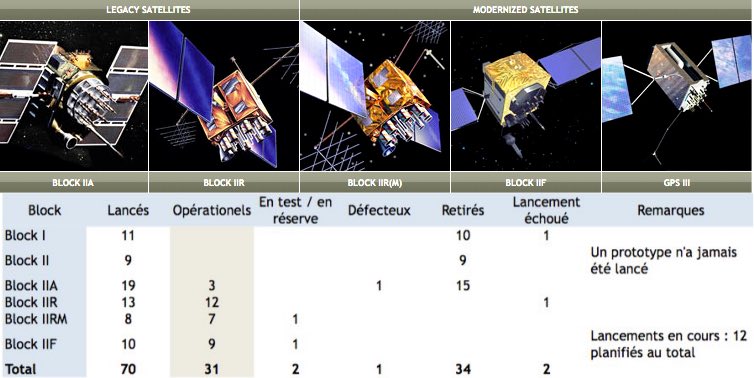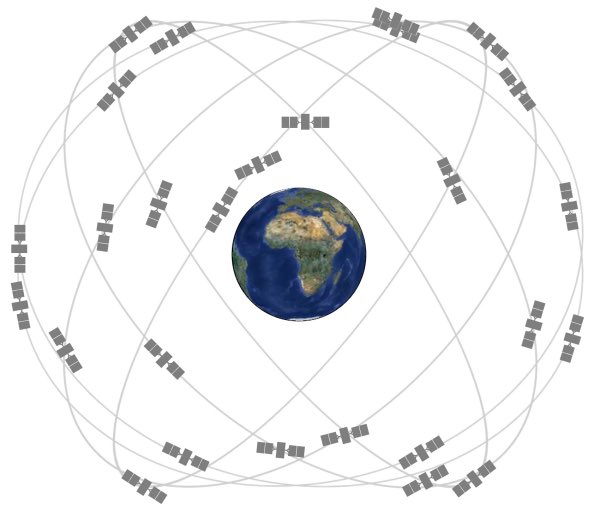 As the number of GPS receiver devices increases significantly, so does our dependency on the GPS, but satellites are subject to wear out and age.
As the number of GPS receiver devices increases significantly, so does our dependency on the GPS, but satellites are subject to wear out and age.
THE U.S. Air Force has since launched 2010 the second constellation of GPS satellites, named GPS Block IIF, or GPS IIF, built by Boeing. These satellites will replace the GPS IIA satellites of the first constellation, launched between 1990 and 1997, with lifespan design about 7,5 years.
La constellation GPS
GPS satellites operate in medium Earth orbit (MEO) at an altitude of approximately 20.200 km. Each satellite circles the earth twice a day. They are arranged on 6 orbital's plans of 4 satellites, allowing a user to always view at least 4 satellites anywhere on the globe ground. Until 2011, additional operational satellites (in the number of 7) serving as spare to replace a base core satellite failed, could increase the performance of the GPS system, but were not considered an integral part of this core. Since June 2011, 3 of them have been integrated, extending the GPS constellation to 27 satellites, thus improving global coverage.
GPS IIF
GPS IIF satellites incorporate various improvements for greater accuracy, more and better quality signals, and performance generally improved for users. They will provide improved signals to support both military ground fighting and growing civilian needs of the global economy. They will provide better precision thanks to cutting-edge atomic clocks, and a lifespan of 12 years old, much more than previous GPS satellites. They will offer a new third operational civilian signal (L5) which will benefit commercial aviation and human safety applications.
GPS IIF-10, that comes to be launched on 15 July, was the tenth in the Block IIF series. Two more satellites are planned for launch in September 2015 and January 2016.
GPS III
But this second constellation is only an interlude before the third constellation is put into orbit. GPS Block IIIA, or GPS III, whose design, and developing, as well as the construction of the first eight satellites, have been entrusted by the U.S. Air Force to Lockheed Martin. It is planned to launch 32 satellites, including the first in the series, GPSIIIA-1, expected to launch no earlier than April 2016, or more probably in 2017. Future variants of GPSIII satellites are planned to incorporate additional features. This will include a satellite distress alert system (THAT), search and rescue capabilities, as well as cross-links of satellites to send commands and reduce the age of the transmitted data .
Summary of the GPS satellites launched by U.S.. Air Force
 ——
——
Source : http://www.gps.gov/systems/gps/space/
——




and meanwhile Galileo ???
It's progressing ! All explanations are on this page :
Galileo : 2 more satellites in orbit